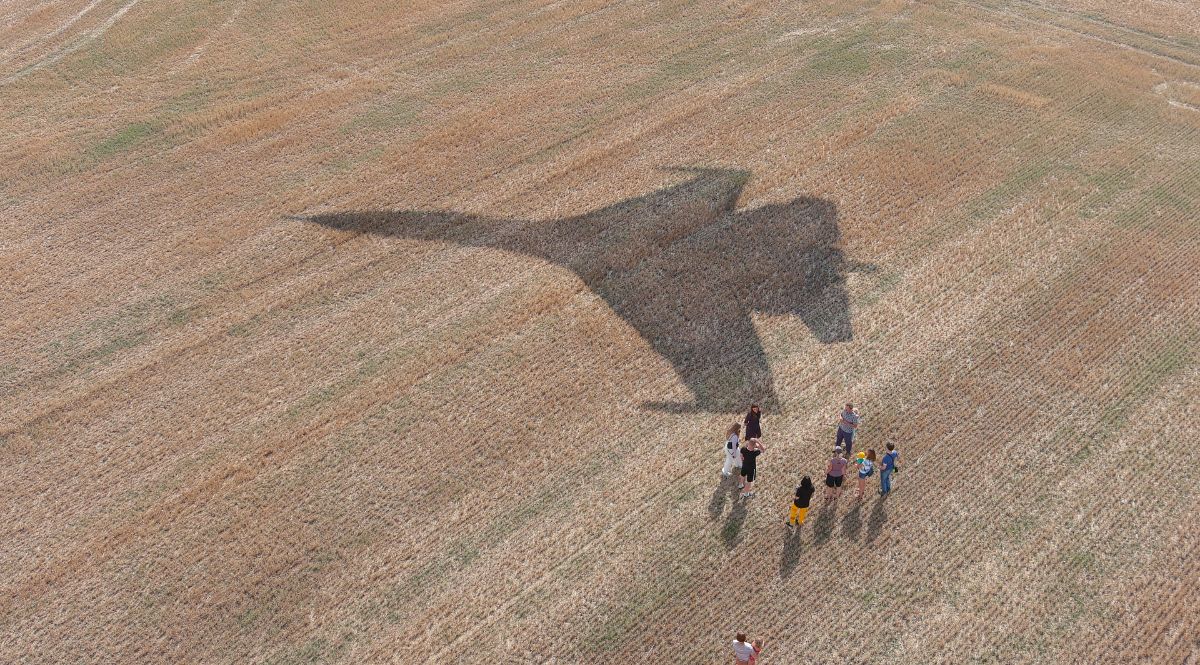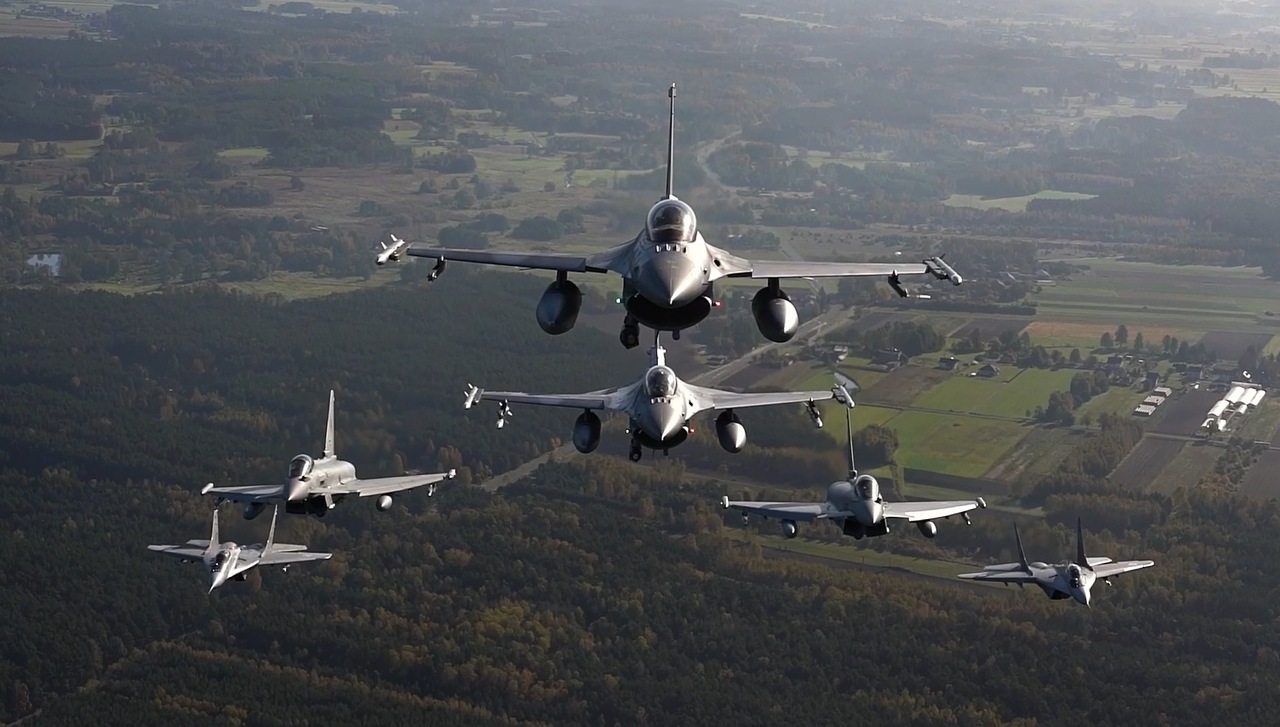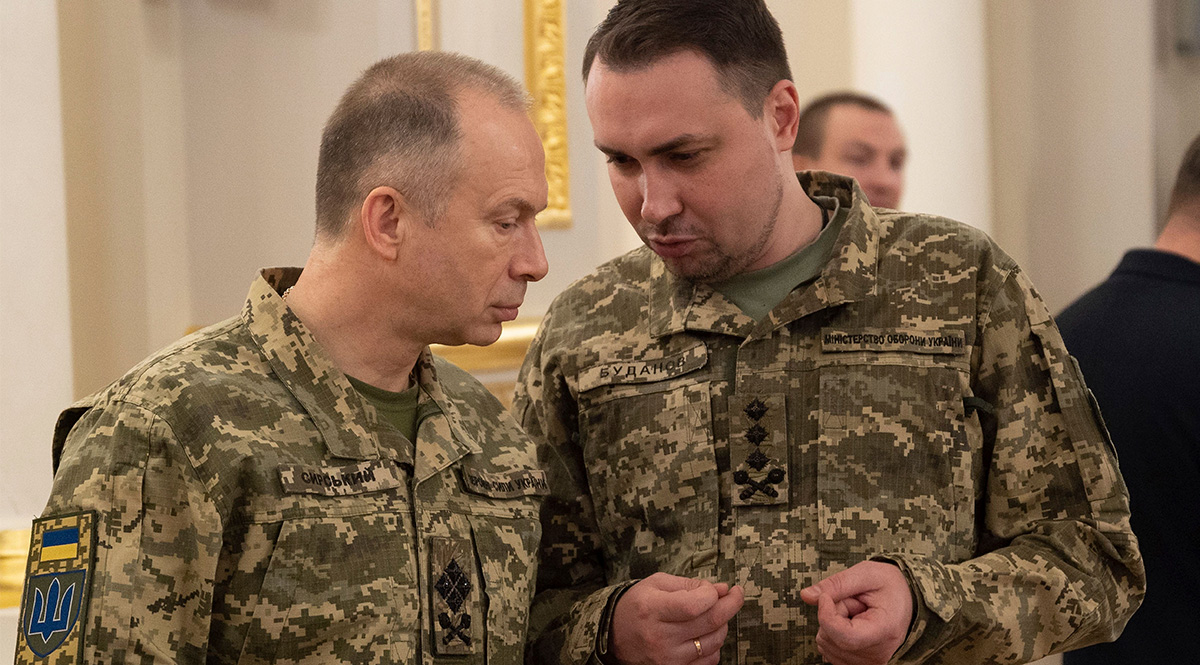Partners Work to Fill Gaps in Ukraine's Air and Missile Defence
With its own resources and the assistance of NATO countries, Ukraine has achieved success in limiting Russia’s air and missile edge. However, Russia is still assuming it will achieve its strategic goals by exploiting gaps in the defender’s capabilities and systematically destroying critical infrastructure and terrorising the civilian population of Ukraine. Western air defence systems and F-16 jet fighters are important augmentations for Ukraine but it is necessary to build its new multi-layered air and missile defence architecture, fully in the standards of NATO.
 Nikita Zigura/Torben Hjorth/Anastasiia Bratkova / Cover Images / Forum
Nikita Zigura/Torben Hjorth/Anastasiia Bratkova / Cover Images / Forum
According to unofficial estimates, Russia since the full-scale invasion of Ukraine in February 2022 has used even 8-10,000 ballistic and cruise missiles. Official Ukrainian estimates also show a constant increase in Russian strikes with cheap and simple Shahed-131/136 kamikaze drones from Iran, in total more than 6,000. On 4 August, Ukraine confirmed the operational readiness of its first and long-awaited F-16 multi-role jet fighters. At the same time, Ukraine is appealing for the delivery and buildup of a network of up to 25 Patriot air and missile fire units (so far it has received half of them).
Evolution of the Russian Threats
Russia so far has not been able to achieve its main strategic goals in Ukraine, despite an absolute quantitative advantage in air and missile arsenals. After the first, most intense, and largely unsuccessful campaign of strikes in spring 2022, Russia has several times changed priorities in the targeting and tactics of its strikes. Post-Soviet systems inherited by Ukraine were still the main obstacles for Russian air operations in 2022-2023. The visually confirmed Russian losses has reached 110 combat aircraft and 107 helicopters that year, and in reality might be higher by 10-20%. Some of these losses are also due to Ukrainian drone and missile strikes in occupied Crimea and even inside Russia. Of no less importance to the equipment lost are Russia’s losses of its most experienced pilots. Despite that, and since at least the end of 2023, there has been increased intensity of Russian Air Force operations with changes of armament and strikes from a safe distance. The mass adaptation of gravity bombs into gliding systems permitted more effective bombardment of targets in Kharkiv and along the frontline, especially in areas of subsequent ground forces operations (Ukraine estimates up to 7,000 gliding bomb strikes in January-July 2024).
Russia is also adapting other means of air attacks on Ukraine. The use of 8-10,000 guided missiles exhausted the Russian reserves and resulted in increased missile production in 2023-2024. The approaching limits of the Russian arsenal were also illustrated by the intense use of obsolete systems or the variety of anti-ship and surface-to-air (SAM) missiles against ground targets. Russia succeeded in opening new production lines, delivering four times more cruise missiles of the Kalibr-family for ground and sea platforms and Kh-32 and Kh-101 types for strategic bombers. However, Russian industry has not been able to achieve a similar increase in ballistic missile production, and the military has exhausted reserves of the ground-launched Iskander-M and Tochka-U ballistic systems. These followed sanctions and the lesser availability of Western electronics, with the priority put on the production of the Kinzhal air-launched ballistic missile (a version of the Iskander-M but launched from the rare MiG-31K aircraft). Russia is also forced to import dual-use items from China and missiles from North Korea and Iran to preserve some quantity of missiles in case of a conflict with NATO. Electronic systems substitutes are also delivered from Belarus and China. In 2024, there were confirmed Russian ballistic missile strikes using the North Korean KN-23 and the Fateh-family from Iran (after several months of speculation about such transfers). Moreover, Russia has been trying to exhaust the defender’s arsenal and to break the morale of civil society with the increased import, production, and use of Shahed drones. So far, Russian licensed production in Tatarstan delivered up to 4,500 of these drones, and in 2025 is planning to produce up to 6,000 more. It cannot be excluded that Belarus and Tajikistan also will eventually produce and deliver these kamikaze drones to Russia.
Gaps in Ukraine’s Air Defence
In 2022, Ukraine was able to maintain a highly effective defence against the aggressor’s air and missile arsenals, mainly due to post-Soviet long-range S-300 systems. However Ukraine has lost as many as 80 fire units and has used the majority of its estimated 5,000 interceptors. Apart from an S-300 battery delivered by Slovakia, so far transfers of these systems from Bulgaria, Cyprus, and Greece have not been finalised. Since spring of 2023, gaps in Ukraine’s S-300 network, mainly in the protection of Kyiv and air bases, has been filled by systems delivered by NATO countries. Ukraine has so far received a dozen Patriot PAC-3 fire units from Germany, the Netherlands, and the U.S., as well as battery of SAMP-T from France and Italy. For many months appeals by Ukraine for more Patriot fire units were unfulfilled due to the stalemate in the U.S. Congress, limitations on reserves, and low production of PAC interceptors. These barriers might be overcome with clear prospects for U.S. military assistance for Ukraine in case Kamala Harris takes office in 2025. Also, the recent Washington NATO summit resulted in further declarations of transfers of an additional dozen PAC fire units as well as interceptors from Germany, the Netherlands, Romania, Spain, Sweden and the U.S. Nevertheless, the current assistance to Ukraine is more of an interim nature and needs to be replaced by a more systemic and long-term approach, essentially building a completely new architecture of an integrated air and missile defence (IAMD) system, based on Patriot-2/3 systems. The best solution here might be increased production of PAC interceptors in the U.S. and Japan in 2024-2025, and later in German and Spanish factories. NATO likely will also increase joint purchases of these interceptors for allied needs, which might also encourage industry to open up more production lines to decrease the costs of future interceptors.
Continuing the transition from Soviet to NATO systems is also necessary in the medium and short-range air defence of Ukraine. This area has also been degraded by the exhaustion of Buk systems and interceptors and lack of more Neva and Osa reserves in the NATO Eastern Flank states. There are no available interceptors in or outside of NATO countries, but the U.S. adapted some of the Ukrainian Buk fire units into launchers with the more available Sparrow interceptor—a new hybrid system called the Franken-SAM. Another solution is transfers of older-generation and more readily available I-HAWK systems and interceptors to Ukraine. It also received up to 30-40 new-generation systems, like the American-Norwegian NASAMS and German IRIS-T. These Western systems combined with Ukraine’s up to 50 still operational MiG-29 and Su-27s and the just delivered F-16 fighters might increase the effectiveness of its defence against Russian aircraft, cruise missiles, and drones.
Less challenging seems to be the gaps in very short and point air-defence systems in Ukraine’s protection from Russian drones and helicopters. This is due to the broad availability and lower costs of options within and outside of NATO, such as man-portable missiles (MANPADS like the Stinger or Striela) and mobile defence systems (like the Striela-10M, Avenger, Shilka 23mm, Gepard 35mm). Although these are all short-range systems, Ukraine introduced an effective acoustic detection network (Iranian drones are noisy and fly at low altitudes) with mobile interception units using trucks with heavy machine guns. This combined solution allowed Ukraine to manage even the increased volume of Shahed strikes. Nevertheless, Russia in 2024-2025 might raise the number further, assuming a decreasing level of interceptions, currently 75-85% of the attacking drones. The Ukrainian interceptions might also be hampered by the Russian tactic of synchronised drone and missile saturation strikes and with more of the faster Iranian Shahed-238 drones (also with jet engines). According to Ukraine, these types of strikes are extreme dangerous to its energy infrastructure, such as natural gas storage and electric power plants. This might result in increased import of electricity from the EU to Ukraine as well as deliveries of more small electric power generators.
Prospects
The high resilience and effectiveness of Ukraine’s air defence thus far have prevented Russia from achieving its strategic goals. The lack of change in the aggressor’s aims is a result of it adapting tactics, increasing production of missiles by Russian industry, and growing assistance from China, Iran, and North Korea. The ongoing transition of Ukraine to Western air and missile defence systems is below its needs and the expectations of the defenders, even when there is no controversy among its partners as these are defensive in nature. Ukraine, with the assistance of its partners, is facing the necessity of building-up new integrated and multi-layered air and missile defence, based on NATO systems that will replace post-Soviet ones. These are challenges for both Ukraine and its Western partners. Declarations by NATO as a whole and by individual partners of Ukraine are steps in the right direction but must be reflected in more production and deliveries of air interceptors. In parallel, there is a need for a greater initiative by NATO and the EU for modernisation of their air defences, using still-available reserves and more Franken-SAM type options. The separate element of assistance to Ukraine should be the determined implementation of U.S. and EU sanctions to limit Russia’s access to Western technologies and sub-parts for its aircraft, drones, and missiles.
These elements should also be a part of a change in the partners’ approaches to assistance to Ukraine, according to its strategy of active defence. Other elements are related to the abolition of previous geographical limits on Western offensive systems (HIMARS, Storm Shadow, and F-16s) or blocking of their deliveries (especially German Taurus missiles). Taken together, these steps will strengthen Ukraine politically and militarily with respect to Russia, giving opportunities to effectively target Russian missile and drone stores, factories, bases, and platforms. Moreover, a balance of Ukrainian defensive and offensive capabilities would be de facto more economic for its partners. Changes in their approaches to all necessary systems would not only increase the cost of the war for Russia and augment deterrence of Ukraine but also further limit losses to Ukrainian society and critical infrastructure.





